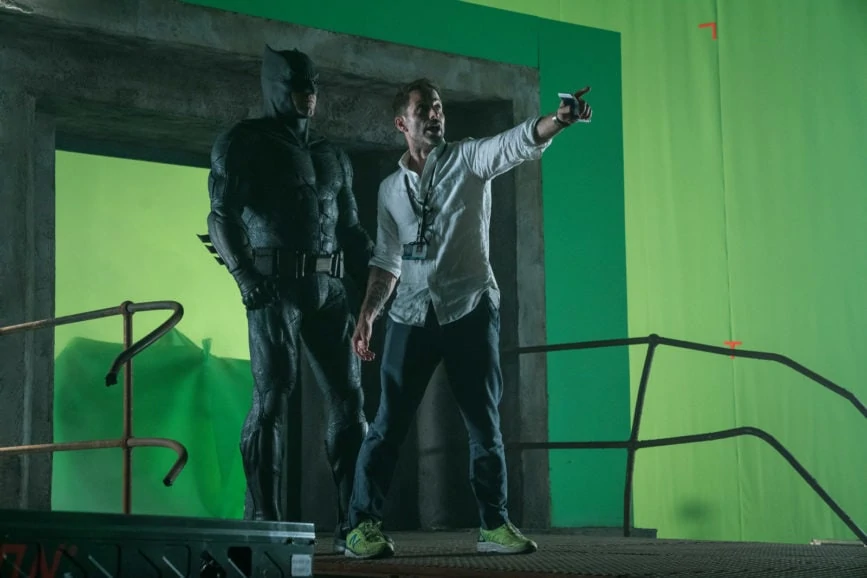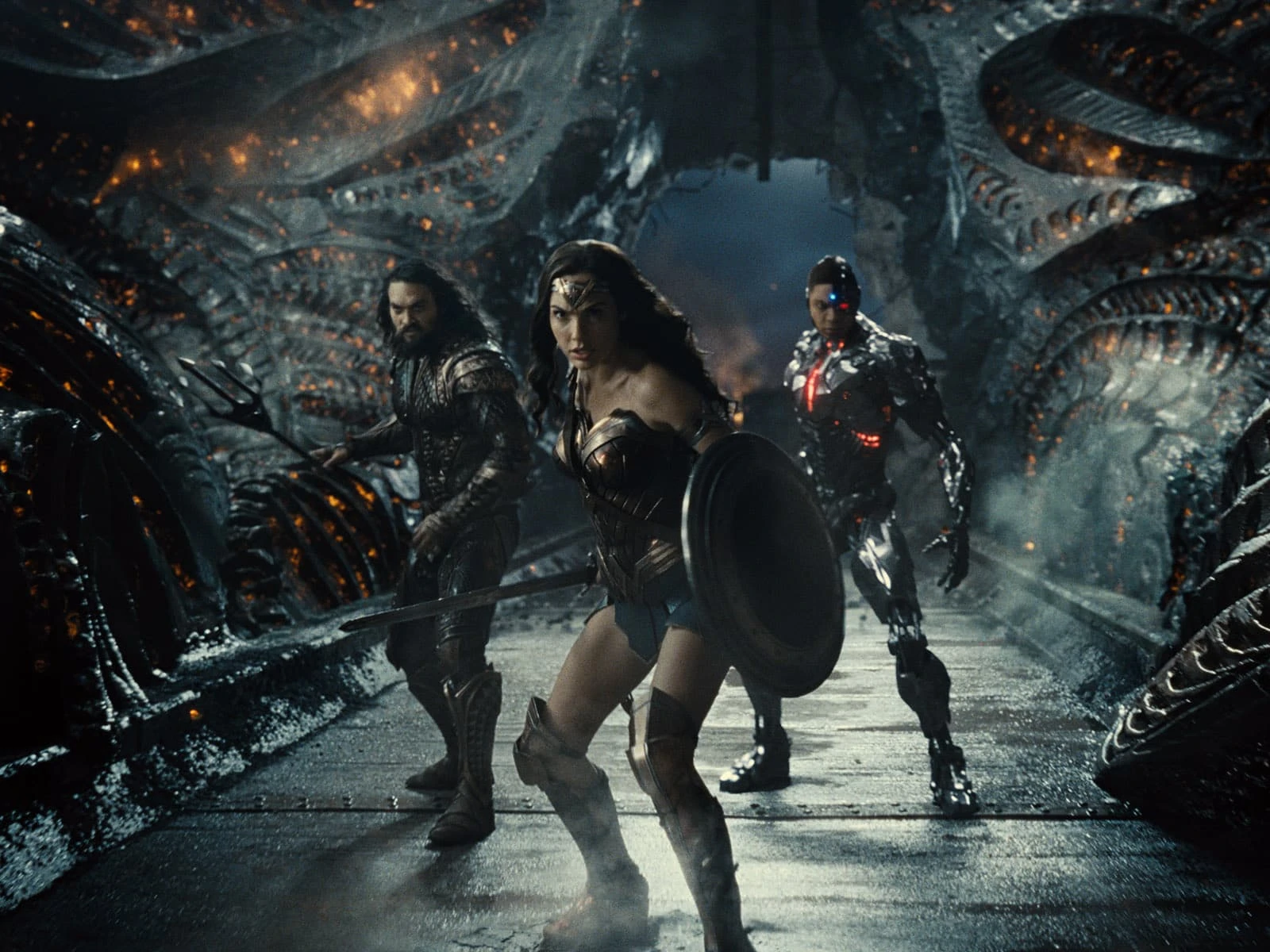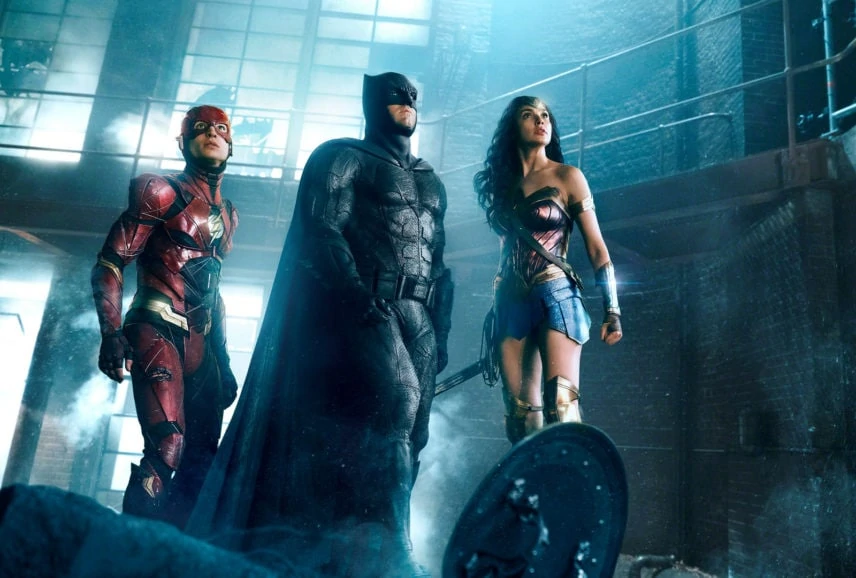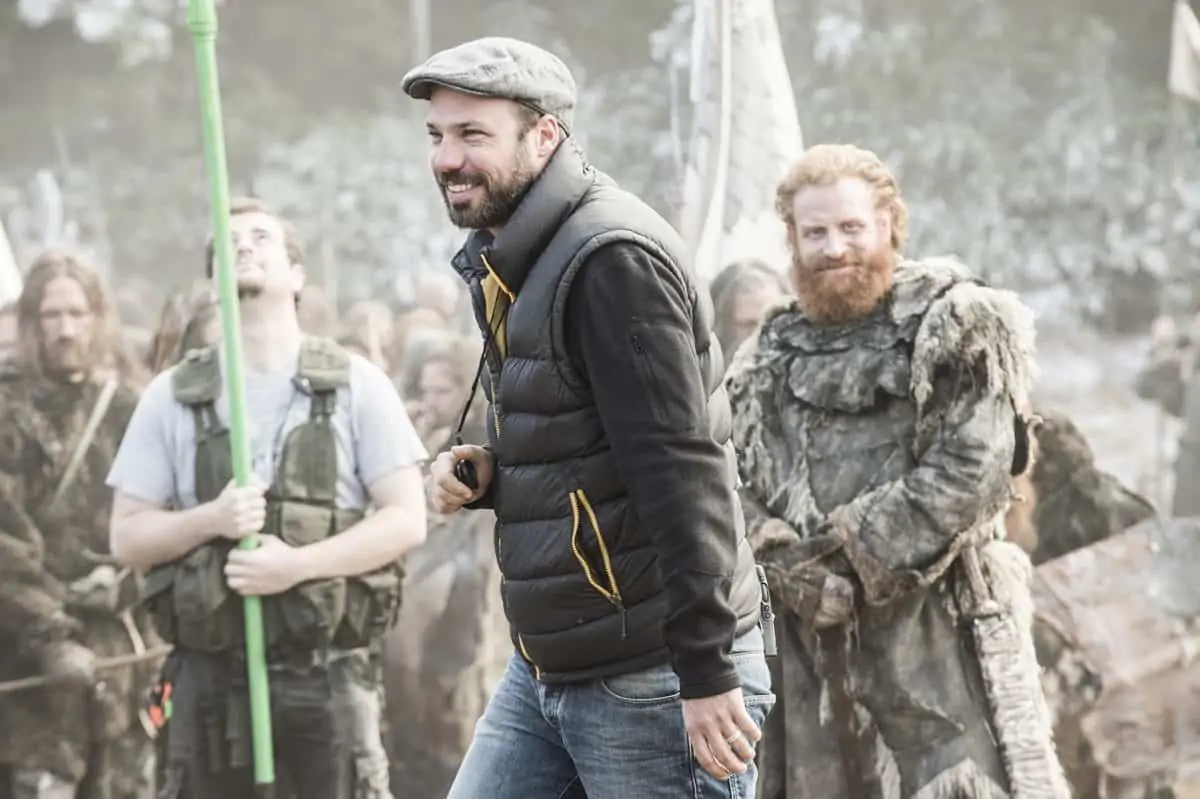THE AGE OF HEROES
There’s justice for Zack Snyder’s League, at last. Fabian Wagner BSC ASC shares filmmaking insight into the creation of the highly anticipated action epic.
“I’m looking forward to seeing it on the big screen,” says cinematographer Fabian Wagner BSC ASC of his work on Zack Snyder’s Justice League. A lot of people doubtless share that sentiment, in their post-pandemic yearnings, as the storied – perhaps even infamous – production has shifted from being apocryphal to extant and critically acclaimed, with its recent HBO Max release.
You might think that Wagner had already seen a version of his work, in its previous incarnation, when director Joss Whedon took over the reins from Snyder, who had left due to both incompatibly clashing visions with Warner studio brass, and because of the profound tragedy of his daughter’s suicide, in that same period. The Whedon version had an ill-fated theatrical run a little over three years back – though given all that’s happened since, it feels like it could have been ten – but Wagner tactfully notes that while the “credits say the same (cinematographer)… I wasn’t involved.”

In other words, he had moved on too, after the original principal photography was finished in 2016, and he wasn’t available for the subsequent reshoots. But he was in LA, “before Zack had left the movie. He had cut original trailers, which were all aired. We’d done the colour correction for those,” and that look, style, and tone, he adds “was the way it was meant to be.”
The version garnering such praise now is being called “operatic” or a mask-and-cape answer to The Lord of the Rings, but none of that comes as a particular surprise to Wagner. “We all knew in which direction the movie was going to go,” he says, though the journey held a surprise or two even at the beginning.
The first was simply being brought aboard to shoot it. Asked how it happened, he grins “that’s a good question – it was a stroke of luck. I’ve always admired Larry Fong, who’s (Snyder’s) regular DP. And to step into his shoes…”
Fong and Snyder were indeed a well-broken in pair of boots, with Fong having lensed most of the director’s well-known films, including 300, Watchmen, and the earlier Batman v Superman: Dawn of Justice, whose own dark death-of-Superman story set up the current Justice League tale.

But luckily for Wagner, Snyder was doing some admiring of his own. “Zack was a big Game of Thrones fan,” he says, and Wagner had shot some of the series’ most renowned episodes, including Hardhome, replete with its White Walker battles, and perhaps even more important for this film’s scope, Battle of the Bastards, which is a mini-epic unto itself about the human kind.
But there were other surprises besides simply getting the gig. Wagner learned they would be shooting on film – they used ARRICAMs and ARRIFLEXEs, with Leica Summilux lenses – which he hadn’t “done in a while.” But more than that, he found that Snyder had a whole different ratio in mind, too.
“I stupidly thought he’d want to shoot the movie in 2.35:1 aspect ratio,” Wagner says, being unduly hard on himself. There was no reason to think this gathering of Amazonians, Kryptonians, Atlantaeans, an orphaned billionaire, and more, wouldn’t share the same anamorphic aspects of many an epic before it. But Snyder told him “I actually want to shoot it in 4:3.”
This may have come as a surprise to home viewers expecting the now-traditional rectangular viewing experience. It similarly came as a surprise to Wagner who “when I was a young kid – (the films) that made me fall in love with cinematography, from the ‘70s and ‘80s, were all widescreen. I assumed that’s what it would be.”

But then he adds “we forget a lot of great films were shot in 4:3.” The more he thought about it, “what a great idea. The framing, though, seemed odd to me,” at least, at first, but in making the titular heroes “taller” than they’d be in widescreen, Wagner allows that “it adds to the characters’ grandeur.”
It became an accumulation of all of those things, to create that look – a whole bunch of different movies. It was really a strange mixture. I guess in the end, it’s like an accumulation of everything you’ve seen of those kinds of characters. The more source material you have, the better
Fabian Wagner BSC ASC
Regardless of ratio, Wagner still found himself looking at a range of films and imagery in preparing for the shoot, including comics – where frames often traditionally mimicked those 4:3 proportions. “I looked at Tim Burton’s (Batman films), I looked at Zack’s again and looked at films like Sin City.” The latter, of course – though directed by Robert Rodriguez – also adapted from a Frank Miller graphic novel, as was Snyder’s 300. Miller, as well, wrote and drew one of the definitive Batman graphic novels The Dark Knight Returns, where the caped crusader was older, grayer, and much more cynical – similar to where Ben Affleck’s interpretation starts in this story.
“It became an accumulation of all of those things, to create that look – a whole bunch of different movies. It was really a strange mixture. I guess in the end, it’s like an accumulation of everything you’ve seen of those kinds of characters. The more source material you have, the better,” Wagner says. But then he also had Snyder to draw on too: “He knows a lot about that universe.”

Snyder also knew that the 4:3 ratio happily approximates the screen proportions for the IMAX showings that the director had originally imagined as part of the film’s initial release, in those pre-Whedon, pre-pandemic times.
But instead of the 65mm film that would be required – along with the heavier cameras – they “shot in Super 35, shooting in full frame, which obviously works for IMAX.”
The 35mm film in question was all from Kodak, “using, pretty much the three films I’ve always been using – the 500 Kodak, the 250 daylight, and the 50 daylight,” from the renowned Vision 3 series of film stock.
The aforementioned ARRIs were an obvious choice for him, too, since Wagner, who currently lives in London, but hails from Munich, “did my apprenticeship at ARRI when I was fifteen.” As for the glass, Wagner “just had a feeling I wanted to try the (Leica) Summiluxes.” which paid off when, during a series of lens tests, he and Snyder look at each other and said “‘those are the ones!’ They’re soft and sharp at the same time (and) they have a beautiful fall off.”

Besides the fall offs, between camera, lens, and stock, he “was going for a dense negative, for both the colour grading, and “the amount of visual effects we had to do.” Or what they thought they were going to do originally, given that much of the budget AT&T pushed WarnerMedia to give the Snyder Cut wasn’t only for editing time, or to shoot the coda at the end, but to finish rendering all that had been left unfinished and non-composited from the earlier footage.
“I always think that good visual effects work is driven by how you shoot it,” Wagner says, which also explains why he was such a frequently recurring DP on Game of Thrones.
Part of how Wagner shoots is to meet the post-production folks halfway, with undertaking some of the effects in-camera. Or at least starting them. He mentions, in particular, “interactive lighting,” including, perhaps the most interactive form of all – fire. He’s partial to using real fire if a scene calls for it, even for conflagrations that will later be extended digitally. “Hopefully, the visual effects get turned into that, what you do on set.”

At which point, “it’s just down to communication.” And happily, Wagner reports great communication with both the person who designed those sets, and the one who extended, or perhaps destroyed them, in post, saying “I had a great relationship with DJ and Patrick.”
“Patrick,” would be Patrick Tatopolous, the production designer who rendered 300, and the earlier Batman v Superman: Dawn of Justice, for Snyder, along with films like Total Recall and Maleficent. And “DJ” is visual effects supe John “DJ” DesJardin, who, besides doing the earlier Matrix sequels, has worked Snyder’s whole superhero canon since Watchmen, along with Sucker Punch. He also supervised HBO Max’s other springtime streaming behemoth (or is that two behemoths?), Godzilla vs. Kong.
A lot of the sets that looked like they might have been extended in post were, in fact, built to scale by Tatopolous and his crew. “Even though we had so many visual effects,” Wagner says, “the sets were huge,” with things like the downed Kryptonian ship, and many other locales filling “a whole stage – it was beautiful to work on those sets.”
But of course, even beautiful, full-sized sets will need some digital detailing when otherworldly visitors, demigods and meta-humans are involved, and as for DesJardin, Wagner has “been speaking to (him) for the last five years – we talked when Zack was on the project,” and kept talking, evidently, until he was back.
The reconstituted multi-hour epic features not only the finished effects work on the majestic sets, and the reworked action sequences, but (spoiler alert) also a new, dystopian postscript, that was filmed in LA. In it, the Joker, played by Jared Leto, makes a tentative truce with Affleck’s Batman, as the heroes are making a stand against Henry Cavill’s now amok Superman – all of it pointing toward Snyder-esque sequels we will probably never get.

Wagner didn’t fly over to film the new end sequence, due to Hollywood being in the throes of the resurgent virus, at the time. Plus, “I had a daughter – a young baby. I managed to spend a whole year at home with my young baby. If the world happened normally, I would’ve been away for the whole year.”
Away, and still with no reason to expect a return to Justice League in that time. Currently, he does sense a certain percolating of new work, slowly and steadily, as projects get prepped, including commercials, a few of which he has managed to do in the meanwhile.
On those shoots, he has used his recently discovered Summiluxes, but “I hadn’t used them on a longer project since.” Would he like to polish them up for another film with Snyder? “I’m fully aware of the fact that Larry is his main DP,” Wagner says, “but I’d love to work with him again.”
As for whether Snyder will get to do any more DC movies with or without him, Wagner does “hope that they continue. Zack’s always been a controversial figure (but) he has his fan base (and) he does have a great vision. I hope that the fans will take to this.”
If the rather rapturous reviews and online conversations are anything to go by, they apparently already have.
Zack Snyder’s Justice League is available on Sky Cinema and NOW TV.












